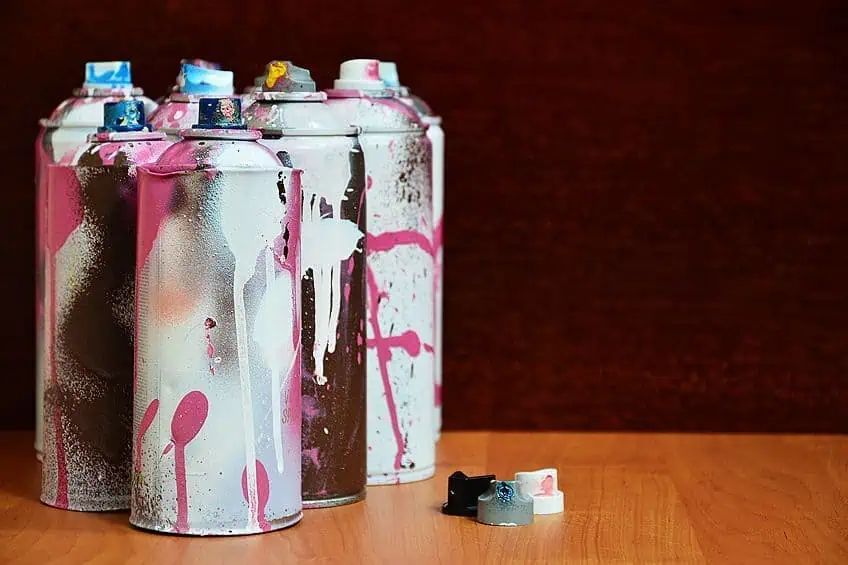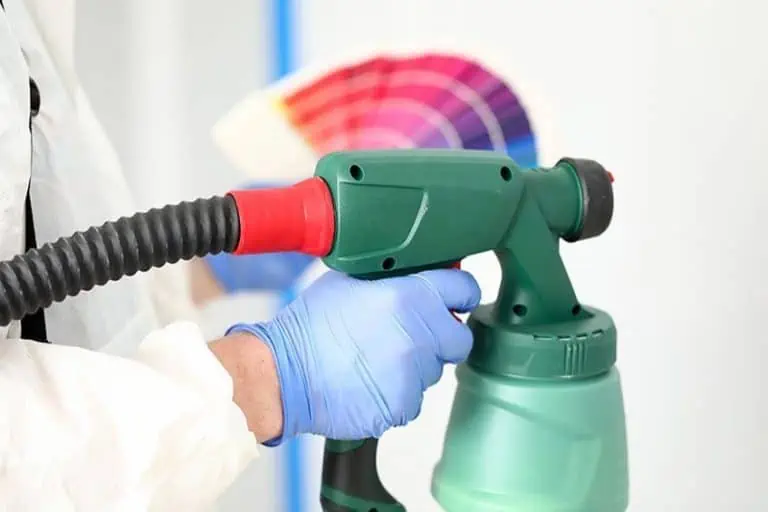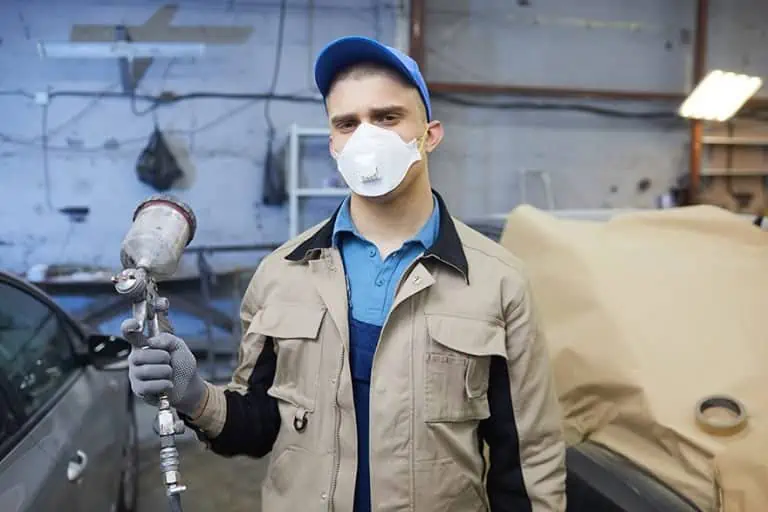How Long Does Spray Paint Take to Dry – Spray Paint Dry Time
This post may contain affiliate links. We may earn a small commission from purchases made through them, at no additional cost to you.
Spray paint has effectively made its way into every facet of society, from street culture to high art, from DIY projects to automotive engineering, spray paint has provided all of us with a quick, effective, effortless means of beautifying our workpieces at a fraction of the price of using a spray gun. Yet have you ever wondered what spray paint is at its core? Spray paints come in a variety of types for various applications, so let’s have a look at what exactly spray paint is, the time different paints take to dry, and how effective they are on various surfaces.
Table of Contents
- 1 How Do Spray Paints Work?
- 2 How Long Do Different Paint Types Take to Dry?
- 3 How Long Does Paint Take to Dry on Different Surfaces?
- 4 How Long to Let Spray Paint Dry?
- 4.1 Surface Dryness
- 4.2 Touch Dryness
- 4.3 Hard Dryness
- 4.4 Thorough Dryness
- 4.5 How Long Should You Let Paint Dry Between Coats?
- 4.6 How Long Should You Wait for Primer to Dry?
- 4.7 Use a Heater to Reduce Spray Paint Dry Time
- 4.8 Minimize Humidity to Reduce Spray Paint Dry Time
- 4.9 Apply Paint Sparingly to Reduce Spray Paint Dry Time
- 5 Frequently Asked Questions
How Do Spray Paints Work?
Even if you have never worked with aerosol paint before, you probably have a good idea of how aerosol spray paints work, probably from movies of kids using them to create graffiti art or some commercial using it to illustrate an edgy new range of products. At first glance, aerosolized spray paint is simply a can with a little ball inside that allows you to mix up the paint before you press the button allowing the spray to be released. In reality, the mechanics of this revolutionary technology and its subsequent applications are a bit more nuanced.

Something that resembles the aerosol cans we know today was created in the late 1940s for the 1949 world fair, which required lots of surfaces to be painted quickly and effectively. Since then, the technology has been researched and developed for mass production which created the easy to use, quick-drying aerosol we know and love today. How do these cans work though? You’re likely already aware of the little ball in the can (it’s there to keep the paint nice and thin), but do you know what the cans are made of? Most spray paint cans are made of light-weight aluminum or steel which is rolled, joined, and capped at each end to form the can. How do they make the paint spray though? Interestingly, it’s not through black magic.
These newly formed cans are filled with paint and an aerosolized substance called hydrofluorocarbon which pressurizes the can. How does this allow the paint to be released? This is where things get a bit tricky. The button you press in order to release the paint is attached to the valve and tube located inside the can, this tube reaches near the bottom of the can. Therefore, when the button is pressed the valve is opened, the air is allowed to enter the can. The air then displaces the hydrofluorocarbon which forces the paint up the tube towards the nozzle. This nozzle has a tiny orifice that atomizes the paint into a fine mist that is sprayed outward toward your workpiece.
It’s pretty simple, not to mention cheap to manufacture compared to a larger paint sprayer. Although, you’d go through way too many aerosol cans if you tried spray painting a house with aerosol cans.
How Long Do Different Paint Types Take to Dry?
If you’re part of the crafting scene you likely know that there are different types of paint that are best suited for certain applications. These paints dry at different rates depending on their type, the surface to which they have been applied, and environmental factors. Here’s a basic table detailing different types of paints and their drying times in moderate conditions. Spray paint drying time will depend on many things, so it is always a good idea to follow the instructions closely. Water-based paint and enamel spray paint will require a different drying time between coats than lacquer spray paints or epoxy spray paints.
| Types Of Paint | Dry Times |
| Oil Paint | Oil paint takes 8 hours to be dry to become the touch and a full 24 hours to dry completely. |
| Enamel Paint | Enamel paint takes 30 minutes to dry to the touch and 8 hours to dry completely. |
| Acrylic Paint | Acrylic paint takes 10 -30 minutes to become dry to the touch and 8 hours to dry completely. |
| Latex Paint | Latex paint takes 5 minutes to become dry to the touch and 1 hour to dry completely. |
What Affects Spray Paint Dry Time?
There are loads of factors that affect spray paint dry time. If this gives you a bit of anxiety, you can rest assured that these factors are easy to control and don’t make a monumental difference in the dry time of your spray paint. However, these factors are great to keep in mind if you have a project that is time-sensitive, so let’s have a look at some of the factors that can affect spray paint dry time.
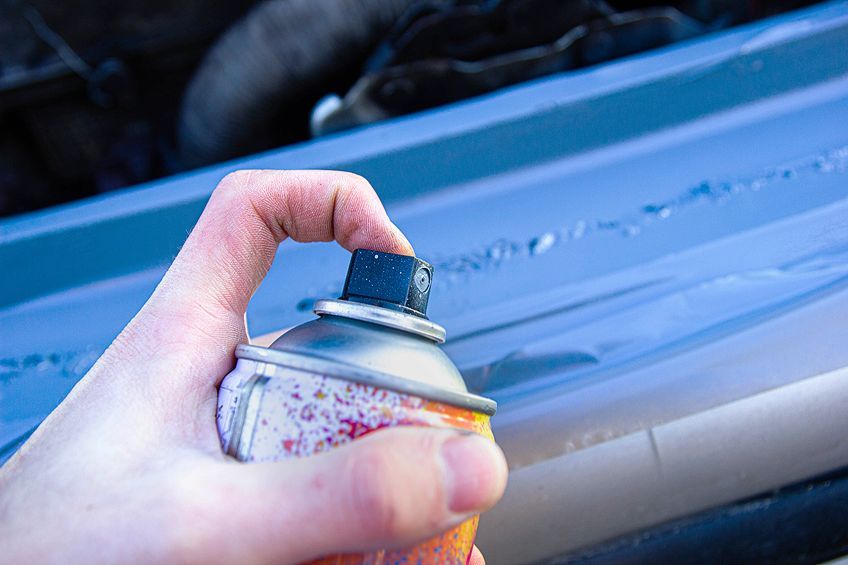
Local Atmospheric Conditions
You might not think that the temperature in your workspace could affect the dry time of your spray paint, but the ambient temperature of your immediate environment can affect the spray paint’s cure and dry time dramatically in certain instances. Humidity level can have a big impact on the dry time of your paint, if your immediate environment or the ambient weather outdoors is high in humidity, it will result in your paint drying far less quickly than you might like. Spray paint dries best in a low-humidity environment with good air circulation.
In this instance, you could use a dehumidifier to reduce the moisture in the air and effectively decrease the dry time of your paint. Spray painting in high humidity is possible, but it’s not recommended if your project is time-sensitive or if you are working with sheer surfaces as it could cause your paint to run. Besides spray painting in high humidity, spray painting in excessively high temperatures is not recommended but for a different reason. Excessively warm temperatures will cause the paint to dry too quickly and inevitably crack, whereas spray painting in cold weather will cause the paint to take far longer to dry.
Spray painting in cold weather might also cause your paint to run excessively, particularly if the painted surface is also cold. This being said, these problems are relatively easy to solve with a climate control system to either increase or decrease temperature in your workspace.
Surface Friction
This is a bit of a strange one, but if you took physics in high school then it might ring a bell. Surface friction is essentially how rough a surface is, but what makes a surface rough? A rough surface is any face of material that is either porous (little indents) or is raised (little bumps) which allows things that contact it to “grip” the said surface with relative ease. Spray paint does not maintain its viscosity once exposed to the atmosphere and the drying process (although subjectively slow) starts immediately, therefore the rougher the surface the longer spray paint will take to dry. As such, it is always a good idea to sand your surface a little to increase the surface friction before you apply your spray paint.

Why? A rough surface means that the temperature change of the paint during the drying process is not uniform due to the changes in elevation on the surface of your workpiece. The inverse is true with a smoother surface, since the surface is relatively flush the paint dries at the same rate, and the smaller the surface and more flush it is, the shorter time it will take for your spray paint to dry.
Type of Surface Being Painted
You might have known this all your life without even realizing it, and the principle is straightforward compared to those we have covered thus far. Surfaces play a big role in the time it takes for spray paint to dry. Why? Well, there’s not really a “one size fits all” answer to this because we spray paint a wide variety of surfaces these days, but we’ll walk you through a few key factors. Surfaces can be absorbent, so they have a habit of soaking up the paint once it has been applied, therefore it can take longer for the paint to dry completely as the drying process has to take place both on the surface of the workpiece and on the fibers of the material.
A good example of this is wood or Styrofoam, paint seeps into the wood’s fibers and pours of Styrofoam which can make painting them a bit tricky, especially with aerosol spray paint.
Spray paint cure time can also be affected by material conductivity. If your material is good at conducting various forms of energy which affects its molecular composition and/or temperature, it can affect how paint dries on its surface. A classic example of this is metal, which is notoriously challenging to paint when it’s either too hot or too cold, not to mention that temperature changes in metal cause it to either expand or contract. Thankfully enamel paints are good at handling temperature changes, this is why they are often used on high heat metal surfaces like car engines to compensate for the characteristics of the material.
How the Paint Is Applied
Spray paint cure time can also be affected by the manner in which the paint is applied to a given surface. Have you ever noticed that the paint left on the pallet dries quicker than the paint you have in your container? No, this is not because the container is made of a special material (although it does help) but rather due to the difference in the volume of paint present on the pallet versus what is inside the container.

Essentially, the thinner the layer of paint applied to a surface, the faster it will dry. It’s for this reason that many painting tutorials recommend that you apply thin layers of paint if your goal is to apply multiple coats. Applying thick coats means that the layer of paint on the surface is thicker, which ultimately makes it more resistant to the drying process. It is decidedly difficult to overspray a spot using an aerosol can though, considering that you need to move across your surface at a consistent rate to achieve a uniform finish.
How Long Does Paint Take to Dry on Different Surfaces?
A factor that most crafters don’t take into account is the type of surface they are spray painting. How long does spray paint take to dry on different surfaces you ask? Let’s have a look at some of the most commonly painted surfaces and how they increase or decrease the amount of time spray paint takes to dry on each of them. It is also important to know the difference between touch-dry and fully dry spray paint. A non-porous surface may speed up the drying time because the paint does not seep into the object itself.
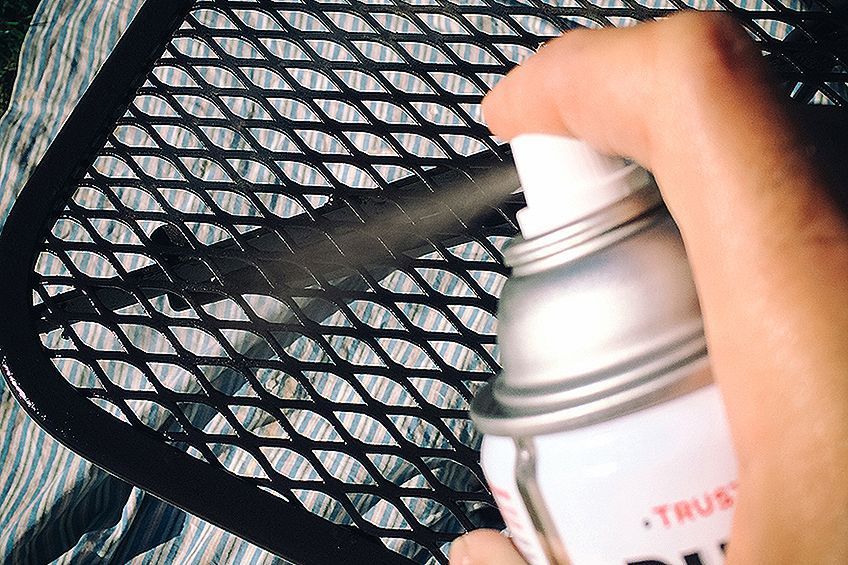
How Long Does Paint Take to Dry on Plastic?
When summer comes around or you’re a bit bored during the winter months it can be tempting to keep your mind and body busy with some DIY. Some of the easiest things to resurface are lawn or deck chairs which are typically made out of plastic these days, but they can be a bit tricky to work with. Plastic typically extends the drying time of any aerosol spray paint applied to it even when a primer has been applied, this is because plastic has very little surface friction. This should not come as a surprise considering that water runs off plastic fairly easily.
Generally, you can expect to add 30 minutes to the dry time of any spray paint you use on a plastic surface, if you are able to snub the surface of your coat with your finger it needs some more time to dry even if it appears dry on the surface of your workpiece.
How Long Does Paint Take to Dry on Metal?
Metal is a pretty tough material to work with in general, so it won’t come as a surprise that spray painting metal can be fairly labor-intensive and time-consuming work. As we mentioned previously, metal is a really good conductor of heat and cold so determining a dry time can be challenging. When metal is hot it can take a long time for spray paint to dry on the surface, this is due to the metal retaining heat really well and taking a considerably long time to dissipate said heat.
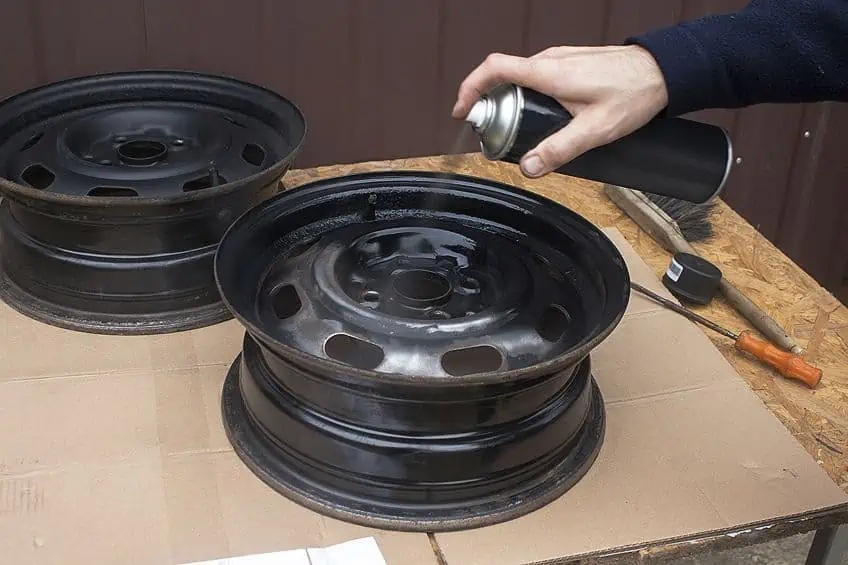
When metal is cold it can accept spray paint marginally better, but if the ambient temperature is below freezing it will cause your paint to freeze and crack in contact with the metal because once again, metal retains energy really well. Generally, when the spray paint is applied to mental it takes roughly two to three hours for the spray paint to dry to the touch, and plus-minus double that for the paint to cure and set completely. The aforementioned is under ideal conditions even after a primer has been applied to the surface of the metal.
How Long Does Paint Take to Dry on Wood?
Wood is probably the most common surface in the world subject to spray paint. It is considerably difficult to say how long spray paint takes to dry on wood, this is because there are lots of factors to consider when the wood is being sprayed. If the wood has been pressure treated and not properly kiln dried it can take much longer for spray paint to reach a thorough dry not only on the surface but inside the wood fibers. Using oil-based paint on wood will produce a longer dry time because it is much thicker than other paints, and it seeps into wood fibers which means it has a more durable finish, but it will take much longer for the paint to dry than a thinner paint.
Decreasing the ambient temperature of your workspace will allow the paint to dry faster both on the surface and on the interior of the wood. Using a thinner paint like latex paint rather than an oil-based spray paint will ensure that the paint dries much quicker, but the finish will be less durable and more susceptible to exterior forces. Additionally, you can achieve a faster drying time if you apply thin coats of paint, and use a hairdryer to dry each layer.
As we mentioned previously, the humidity will also affect the time your spray paint takes to dry, so working indoors is recommended if you happen to live in a humid area.
How Long to Let Spray Paint Dry?
Dry paint is dry paint, right? Well, there are different levels of dryness to consider if you are working with any type of aerosolized paint, whether it be in a can or from a spray gun. These dryness levels determine what you can do with your workpiece once the paint has been applied, so let’s have a look at what the different dryness levels of paint are.
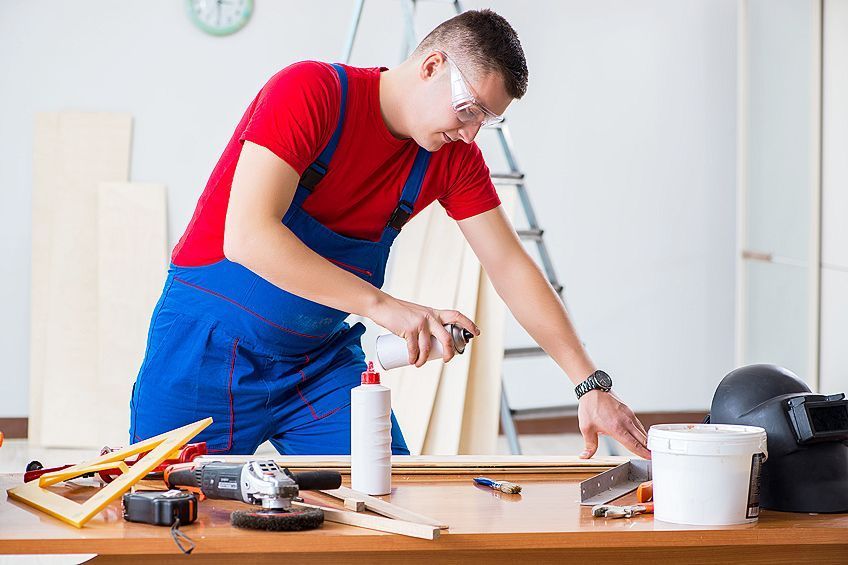
Surface Dryness
Surface dryness can be a bit deceptive. Surface dryness is where the initial layer of paint appears dry, but in reality, it is still wet underneath. Surface dryness acts like a crust, with the only giveaway being that it still has a slight glimmer to the texture of the paint. Fast-drying spray paint can deceive you, so it is always best to pay attention to the required drying time.
This usually happens far before the manufacturer’s recommended drying time, so ensure you adhere to these guidelines to avoid any hiccups.
Touch Dryness
Touch dryness is a step removed from surface dryness. Although it may appear dry to your initial touch if any pressure is applied to the surface it will crack to reveal some decidedly wet paint underneath. Touch dryness can be influenced by ambient temperature and can actually be a sign that your paint is drying quickly, so be sure that you know the difference especially when spray painting in ideal conditions.
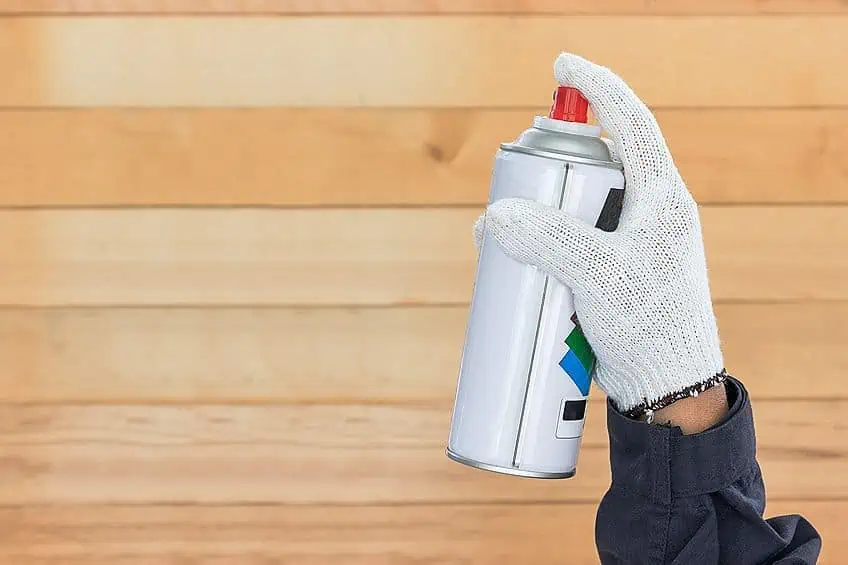
Hard Dryness
The hard dry level is a tricky one. At this stage in the drying process, the paint should be dry all the way but depending on ambient conditions it will still smudge if you touch and apply pressure to the surface. This is not a thorough dry, although it may seem to be at first glance.
On the bright side, it won’t leave any paint on your fingers and is a good indication that your paint is nearly completely dry, at this stage (depending on the material you are working with) heat can be applied to speed up the drying process from a good distance.
Thorough Dryness
The time has arrived, this is the moment you have been waiting for since you applied your first coat of paint! At this stage in the drying process, the paint will be dry on the surface and on all the layers underneath. It should be safe to touch without any smudging, and because it is completely dry it shouldn’t be affected by any temperature changes.
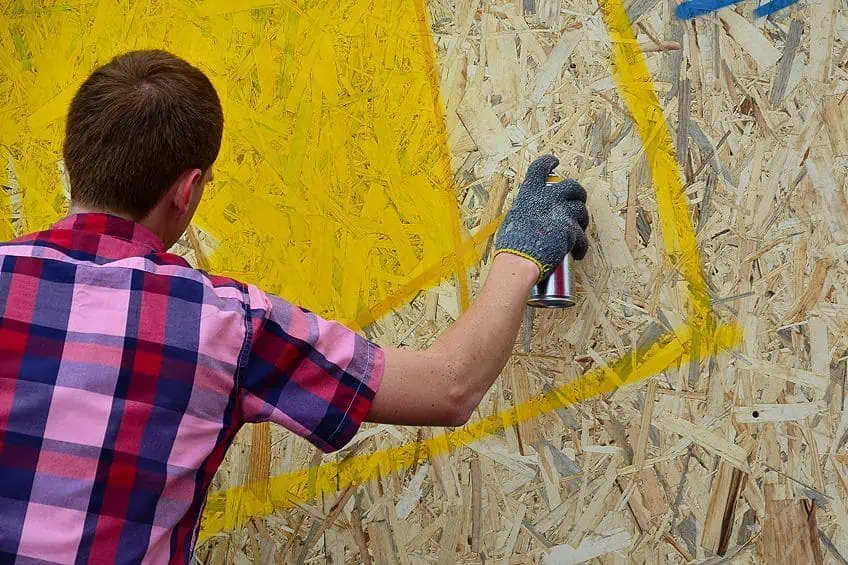
How Long Should You Let Paint Dry Between Coats?
As we mentioned previously, the paint dries at different rates depending on a number of factors, two of the most important factors being the material you are painting and the ambient temperature of your immediate environment. Generally, it is a good idea to let any paint on any surface dry for two to three hours before sanding the surface lightly with fine sandpaper and applying your next coat of paint. This will also depend on the type of spray paint you use.
Remember that patience during the drying process can save you a lot of time having to respray your entire workpiece, which would be frustrating, to say the least.
How Long Should You Wait for Primer to Dry?
If you’re out of the loop, primer is a substance that you apply to a surface after it has been sanded. There are primers for virtually any surface and its purpose is to assist the paint in adhering to the surface of your workpiece, and sticky paint tends to dry quicker than paint that’s constantly running off. The drying time for primers does vary considerably because all primers are designed for specific surfaces, but the rule of thumb for primers is that they take around three hours to dry and accept the paint completely. Much like paint, primers are subject to forces like humidity, ambient temperature, the temperature of your workpiece, and the overall condition of the surface it has been applied to.

Use a Heater to Reduce Spray Paint Dry Time
Okay, using a heater on your workpiece means that you are walking a fine line. Heat is great for making spray paint dry a lot faster, but if you aren’t careful the heat could be excessive and cause your paint to dry too quickly and crack. The idea is the heat your environment and not the actual workpiece to avoid the aforementioned. You may see some people suggesting a heat gun, but this level of heat may be a little extreme. A hair dryer can be a good option but only on a low setting. A gentler option is to place your item in direct sunlight, as this level of heat is ideal.
Space heaters are cheap and pretty easy to come by, so this is a fairly achievable way to ensure that your paint dries a lot faster than it would naturally.
Minimize Humidity to Reduce Spray Paint Dry Time
We mentioned previously that humidity is the enemy of your paint drying. If you are able to minimize humidity it will make a ton of difference in the time it takes for your paint to dry. It’s pretty unreasonable to think you could remove all the moisture from your immediate environment, but an over-the-counter dehumidifier should work just fine and ensure that your paint dries evenly, and far quicker if you’re working in a particularly moisture-rich environment.

Apply Paint Sparingly to Reduce Spray Paint Dry Time
Once you’ve shaken up your spray can and the sound of the little ball rattling around has your dopamine flowing, it can make you a little trigger-happy. Applying paint in really thick coats can make your dry time excessively long. Applying your paint in multiple thin layers is a great way to reduce your dry time, and if you’re developing your skills, it’s a great way to achieve a professional-looking finish easily as there’s a smaller chance of the paint bubbling or overspray. If you’d like to give this technique a try, remember to lightly sand your paint between coatings after ensuring the initial layer has dried entirely.
Now that you know what spray paint is, how it’s made, how a spray can dispenses paint, how to ensure that your paint dries faster, and what factors influence a paint’s dry time, it’s time for you to go out and put your new-found knowledge to the test. Remember to always wear a mask and gloves when working with any aerosolized product and ensure that humidity is kept to a minimum.
Frequently Asked Questions
How Long for Spray Paint to Dry on Wood?
Depending on the type of wood and the type of spray paint being used the drying time can vary considerably. Generally speaking, it can take roughly 30 minutes for most paints to surface dry on wood, although it can take up to three to four hours for the paint to dry completely.
How Long for Spray Paint to Dry on Metal?
This does depend on the type of metal your workpiece is made of, but it is much less of a wait for spray paint to dry on the metal compared to wood. Factors to consider when using spray paint on metal are humidity, the smoothness of the surface, and the thickness of coats being applied.
How Long to Let Spray Paint Dry Before Sanding?
This is a fairly common question. Like most questions relating to paint drying, paint dry time is subjective to the condition of your workpiece, the ambient temperature of your workspace, and the amount of paint that has been applied. Typically, it should take 30 minutes between coats before you sand down for the next coat. With materials like plastic, you should wait roughly two hours.
In 2005, Charlene completed her wellness degrees in therapeutic aromatherapy and reflexology at the International School of Reflexology and Meridian Therapy. She worked for a company offering corporate wellness programs for several years before opening her own therapy practice. In 2015, she was asked by a digital marketer friend to join her company as a content creator, and it was here that she discovered her enthusiasm for writing. Since entering the world of content creation, she has gained a lot of experience over the years writing about various topics such as beauty, health, wellness, travel, crafting, and much more. Due to various circumstances, she had to give up her therapy practice and now works as a freelance writer. Since she is a very creative person and as a balance to writing likes to be active in various areas of art and crafts, the activity at acrylgiessen.com is perfect for her to contribute their knowledge and experience in various creative topics.
Learn more about Charlene Lewis and about us.
